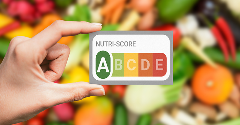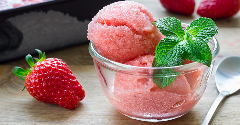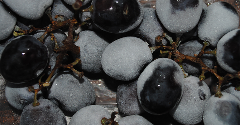sponsored content
A sticky issue: delivering superior product stability in sugar confectionery
17 Oct 2018In today’s competitive confectionery market, manufacturers are challenged to deliver new, exciting flavors that maintain stability. Ardie Lankveld, market manager at Corbion, shares factors for success

Innovation remains a strong feature of the global confectionery industry. As demonstrated by high levels of new product development and increased product launches, manufacturers are attempting to maintain consumer interest by looking for innovative ways to diversify their offering. Indeed, over the past five years, the total number of new product launches in confectionery (jellies, gummies, hard candy and sugar confectionery only), has risen steadily from 5,839 in 2010 to 7,443 in 2014. Furthermore, in geographically fragmented markets, such as Western Europe and Asia, new product innovation is particularly pronounced, while growing markets such as Latin America, the Middle East and Eastern Europe also continue to show a vast increase in product launches.
As well as experimenting with new ingredients and flavors, confectioners are increasingly reducing sugar levels and removing artificial ingredients and additives to improve the perceived health and nutritional qualities of their confectionery products. Germany-based sugar confectioner, Haribo, for example, launched a menthol gummy sweetened with stevia plant, claiming that the product has 40 percent less calories when compared with traditional licorice. Meanwhile, Italian-Dutch confectioner, Perfetti Van Melle, launched a limited edition variety of its Mentos sweet containing ‘surprise flavors’, that consumers are unable to identify as sweet or sour, fresh or fruity, until they eat it.
However, in such a competitive market, maintaining consumer loyalty is critical. Here, Ardie Lankveld, market manager – confectionery & food at Corbion, highlights some of the critical factors in developing successful new confectionery products and key considerations when formulating new recipes to meet the demands of ever-discerning consumers.
The complete package
Across the entire food and beverage industry, consumers are increasingly looking for new and extreme flavor experiences – and the confectionery market is no exception. As such, flavor innovation is a continuous trend in new product development, with many manufacturers using exotic fruits or spices, or unique sensory combinations to set their products apart, and capture and maintain consumer interest. Five fruit flavors showing impressive development in the European market include watermelon, blackcurrant, coconut, lime and cranberry, marking a significant shift away from more traditional flavor profiles such as strawberry, raspberry and vanilla. New products with flavored layers for indulgence and intense flavor editions are also making their way onto supermarket shelves.
The use of naturally-derived ingredients in food and beverage applications has also increased considerably in recent years, especially in EU, and to a lesser extent in the US, due to increasing consumer demand for clean-label, natural products and the avoidance of artificial additives. For a category in which artificial colors and flavors are prolific, this creates significant challenges for confectioners looking to create winning consumer appeal. In practice, it means they need to deliver named profiles that exhibit recognizable flavors and colors which equally impart an authentic taste, while using ingredients with ‘natural appeal’.
Meanwhile, confectionery consumers are highly discerning and intolerant of faulty products, such as those which do not meet their expectations visually (color, appearance) or in terms of taste. As such, they increasingly look for brands which consistently offer quality products that stay fresh for longer and retain their flavor and texture over time, even if the packaging had been opened. And so manufacturers need innovative ways to maintain and enhance product appearance, texture and flavor, to be able to guarantee a product’s quality throughout its shelf life.
Achieving optimal stability
Achieving optimal stability in appearance and taste in sugar confectionery is a significant challenge. Several factors, including the environment, packaging and pH can influence the overall quality of sugar confectionery. This can lead to sugar inversion in hard boiled candies, whereby the sugar splits into glucose and fructose, triggering moisture absorption, and loss of gel strength and taste impact in soft candies, such as jellies and gums.
The environment, especially in hotter climates, also has a significant impact on confectionery stability. In hard boiled candies for example, exposure to high temperatures and moisture can speed up sugar inversion, resulting in a sticky surface that is unacceptable to discerning customers. Similarly, at increased temperatures and humidity, acid sanded jellies and gums attract moisture from their surroundings much faster. This hygroscopicity results in a ‘wet’ appearance; impairing visual appeal, and causes acid to migrate from the exterior of the candy into its interior. As a result, the jellies and gums lose their instant sour taste impact, and the migrated acid might even affect the quality of the candy base.
Packaging is a common way of preserving products throughout their shelf life, by reducing their exposure to the harsh, external environment, as well as offering protection from micro-organisms and damage. The right packaging material and seal integrity are imperative in ensuring an effective barrier against these external influences. In an attempt to overcome the most difficult issues, manufacturers have experimented with thicker packaging materials or placed smaller bags within an outer package. However, these solutions can significantly increase cost and are considered detrimental to the environment.
In confectionery, sourness has always been used as a basic taste component to offset the otherwise intense sweetness of sugar. So as consumers turn toward more new and exciting flavor combinations, including intense sourness, achieving the perfect flavor profile has become a significant challenge for manufacturers. As a result, acidulants, particularly citric acid, are widely used across the industry to improve flavor profiles by reproducing authentic flavor reminiscent of real fruit. Finding a stable sugar-acidulant matrix, however, is difficult. This is because adding an acidulant often impacts overall product quality and texture stability in confectionery products.
Finding the perfect formulation
A fruit-flavored candy formulation without an acid has a pH of around 6 or 7, and tastes extremely sweet. In order to create a fresh or intensely sour taste, an acid must be added – this, however can lead to sugar inversion in hard boiled candies, gel degradation in jellies and gums and acid migration in acid sanded candy.
Limiting pH variation to a narrow range can help to control these effects. Using buffered acid blends or individual buffer salts provides the required sourness, without lowering the pH, to ensure the end product remains firm and visually attractive to consumers. Common buffered acid blends include combinations of various acids with buffer salts, such as citric acid and sodium citrate. In line with current market trends, these solutions can also help manufacturers to deliver the intense (sour) flavor profiles which consumers so desire.
Each acidulant has a different sour taste profile – some are intense and dissipate quickly, while others are smooth and long lasting. Consequently, the selection of acidulants is a key consideration when it comes to delivering optimal taste. Combining the freshness of citric acid, for example, with the mild, lingering notes of lactic acid creates an all-round, great tasting candy. Buffered acid blends therefore provide numerous options to tailor the sour taste experience, without lowering pH, and thus ensure the product remains firm and visually attractive. 'Furthermore, predictive modelling can now also be used to help manufacturers investigate the impact of different acid types and concentrations on the sourness of candy products, via scientific calculations. This removes the need for numerous and time consuming lab trials, increasing R&D efficiency.
Besides taste enhancement, buffered acid blends can also result in significant processing benefits. Instead of buying and using individual acids and buffers, confectionery manufacturers can procure ready-made buffered blends. Using blends like these enables confectioners to create a basic recipe and differentiate it by adding distinct flavors and colors later in the process, without having to change the acidulant for each flavor variation.
In acid-sanded confectionery, acid powders can also help to create taste differentiation, since different blends can be used to give the product varying sour tastes depending on the type of acid or acids used. Unique acid powder combinations can also be used to enhance sourness, by minimizing migration of the acid powder into the candy, thereby keeping more of it in the sanding sugar on the surface throughout shelf life.
Conclusion
Taste differentiation and product stability are essential when it comes to developing a successful new confection. It is therefore crucial for developers to consider carefully the ingredients available to them when formulating new recipes to ensure they meet the demands of today’s consumers. Corbion supplies a range of buffered acid blends under its PURAC® brand, which provide the much needed stability as well as the taste differentiation consumers increasingly desire. In addition, the company has combined decades of application expertise with scientific research to create a modeling tool, which can help predict both sourness and stability in hard boiled candy. The Corbion® Sugar Inversion Tool is being used throughout NAM, Europe and Asia to investigate the impact of different acids and concentrations on the sourness of hard boiled confectionery.
Alternatively, the company’s acid powder range helps manufacturers to provide immediate sourness and the ideal taste experience throughout the product’s shelf life in acid sanded confectionery. The unique ingredient portfolio varies in sour profiles, offering confectioners a complete toolbox to create their desired taste profiles, by giving them the option to combine specific profiles of different acids for a captivating end product.
Related news

UK to ban junk food TV advertisements before 9pm
3 Oct 2024
In a bid to reduce childhood obesity, the UK government has introduced a policy, coming into effect on 1 October 2025, banning junk food advertising on television before the 9pm watershed.
Read more
Which food and beverage brands made TIME’s Most Influential Companies list?
2 Oct 2024
Chickpea pasta, prebiotic sodas, food boxes, non-alcoholic beer, and a soil carbon marketplace are the specialties of the five food and beverage brands that earned a spot on TIME’s 2024 list.
Read more
New environmental food scoring standards emerge
30 Sep 2024
EIT Food and Foundation Earth collaborate to launch environmental food scoring for products entering the global supply chain.
Read more
Danone removes NutriScore from products
20 Sep 2024
Following an algorithm update that gives some of its sweetened drinks a worse score, Danone has removed the front-of-pack label, NutriScore, from all of its products – putting profit before public health, say campaigners.
Read more
Nestlé develops a new fat reduction method for dairy ingredients
26 Aug 2024
A Brazil-based Nestlé research and development team has developed a way to reduce the fat in milk powder by as much as 60%, without impacting the key characteristics that consumers enjoy.
Read more
Better Juice expands its range to sorbets
16 Aug 2024
Food tech startup Better Juice has developed a technology to reduce the sugar content in fruit sorbets. The process retains the natural vitamins, minerals, and flavours of fruit, while offering manufacturers an easy-to-implement and scalable solution t...
Read more
German study reveals high sugar, fat, and salt levels in children's foods
13 Aug 2024
The food industry is making slow progress in reducing the high levels of sugar, fat, and salt in German food and beverage products marketed to children, according to the Max Rubner Institute (MRI).
Read more
Swedish court overturns prohibition on winery’s use of imported frozen grapes
12 Aug 2024
Swedish company Drood Winery has successfully challenged the Swedish Food Agency’s decision to prohibit the production and sale of their product made from frozen grapes imported from Iran.
Read more
Paris Olympics: Food and beverage brands champion health, fun, and sustainability
5 Aug 2024
Food and beverage brands are aligning with the Paris Olympics 2024 Food Vision, which emphasises sustainability, local sourcing, and plant-based diets.
Read more
The coffee supply chain is failing farmers, says Solidaridad
30 Jul 2024
The coffee industry’s economic model means its profits do not reach farmers, despite there being enough value to be shared all along the supply chain, according to a new report by Solidaridad Network and IDH.
Read more